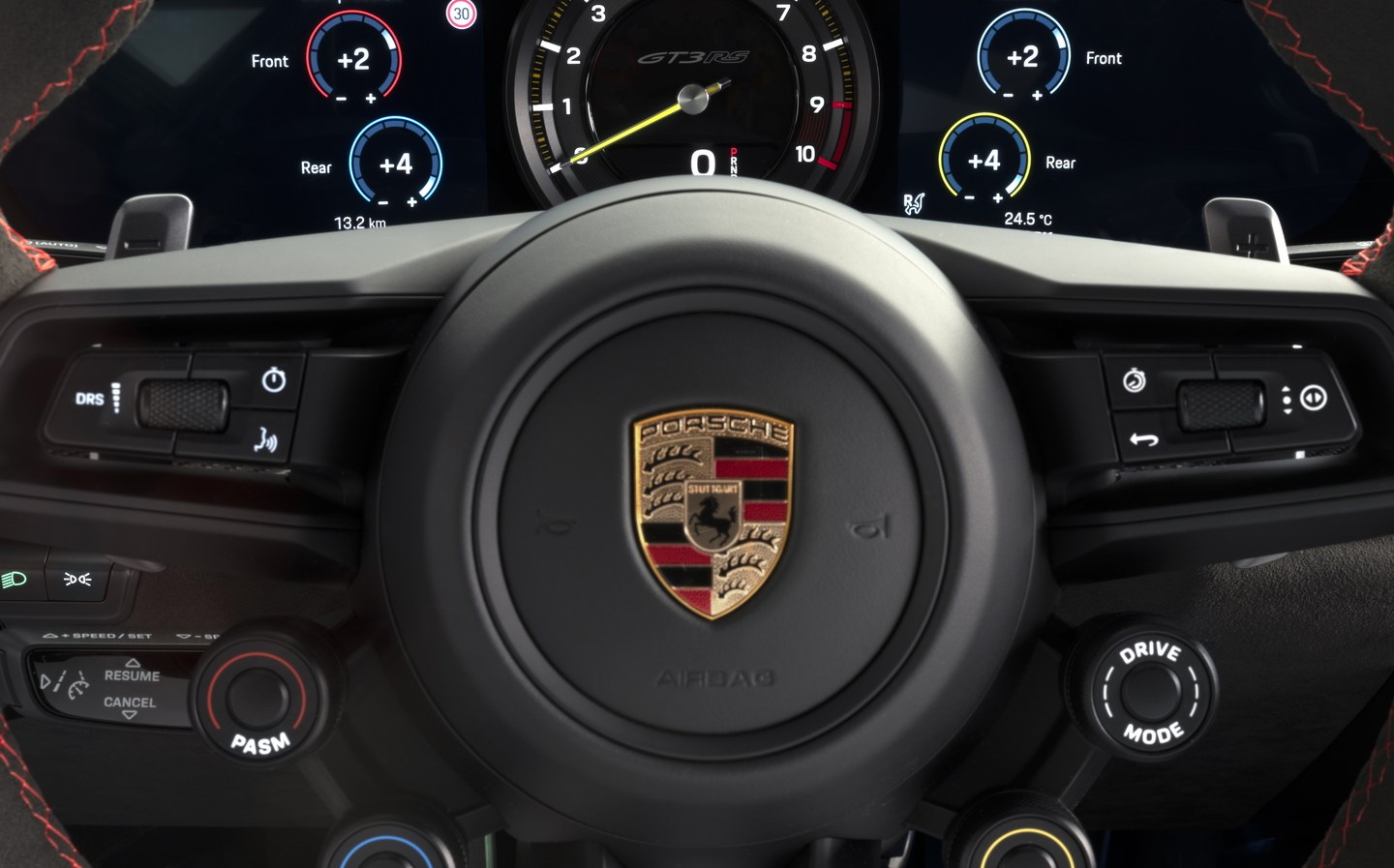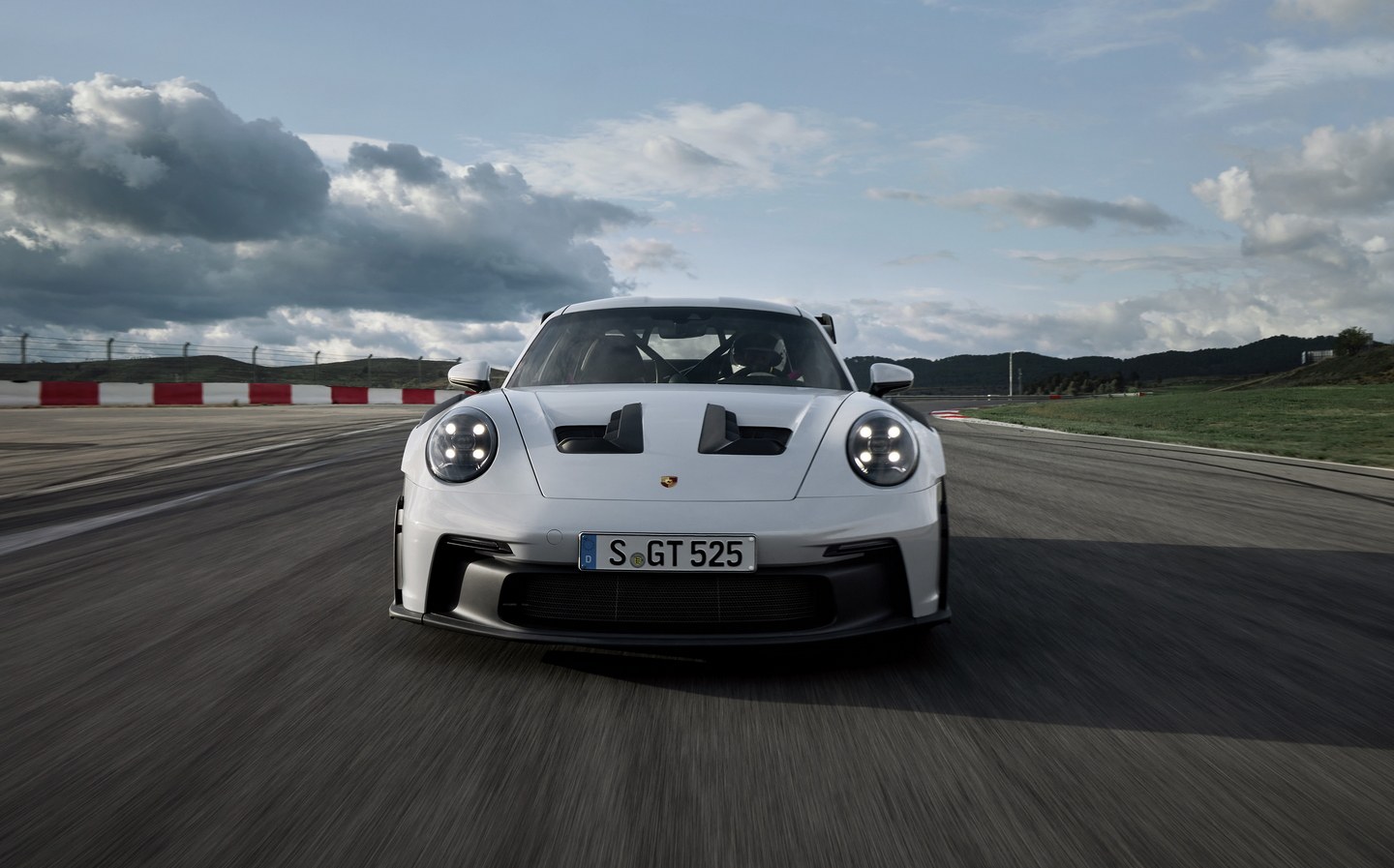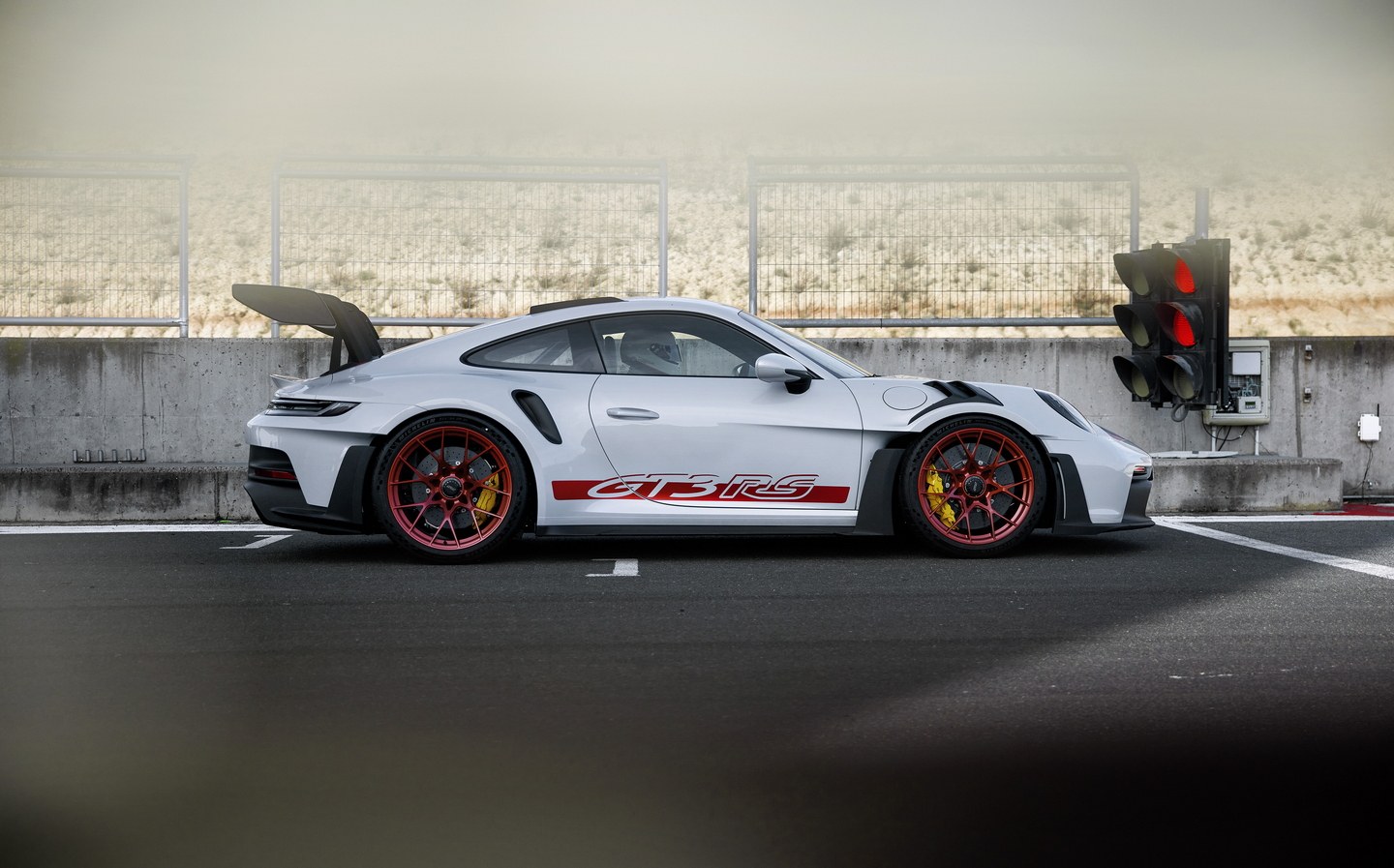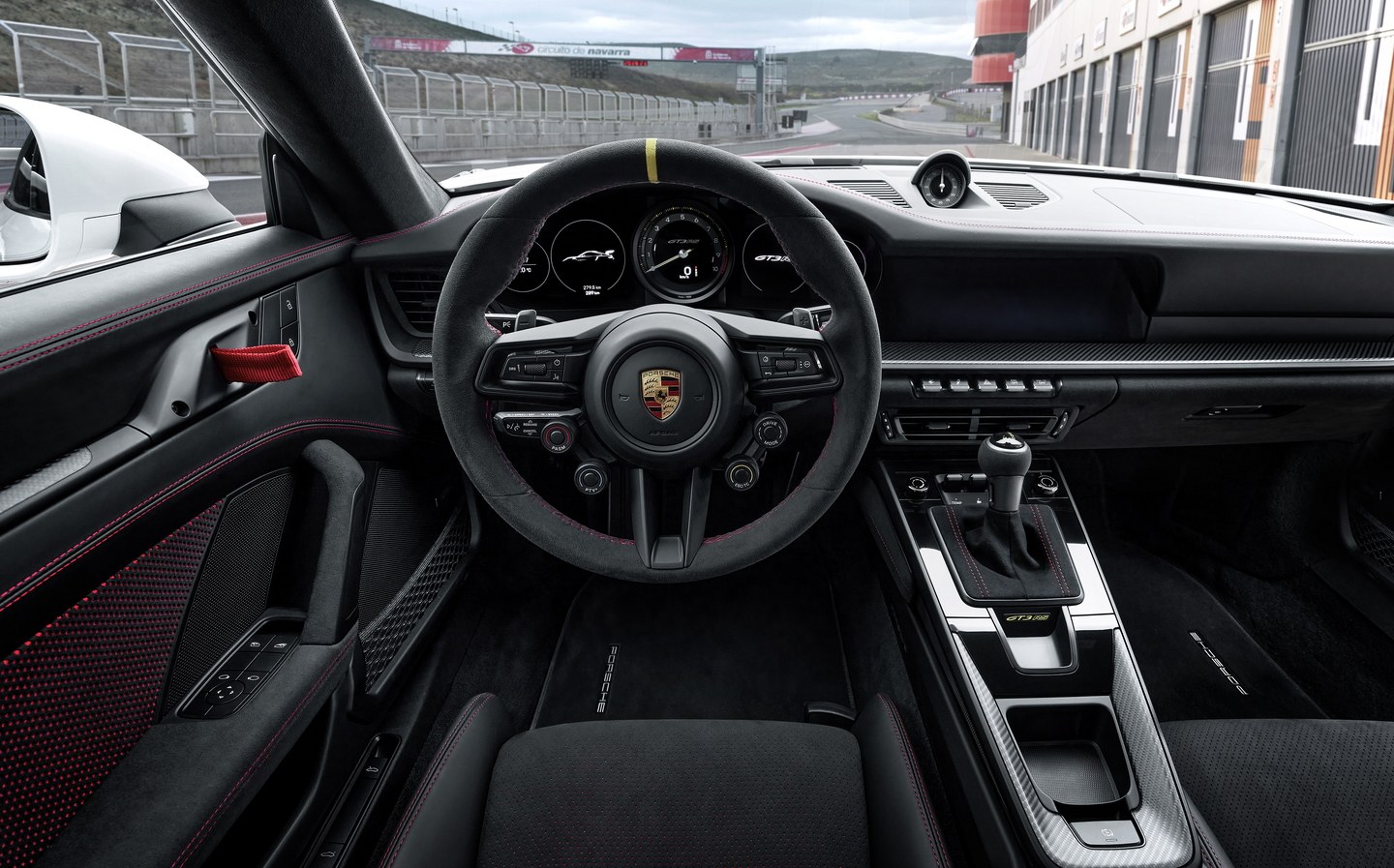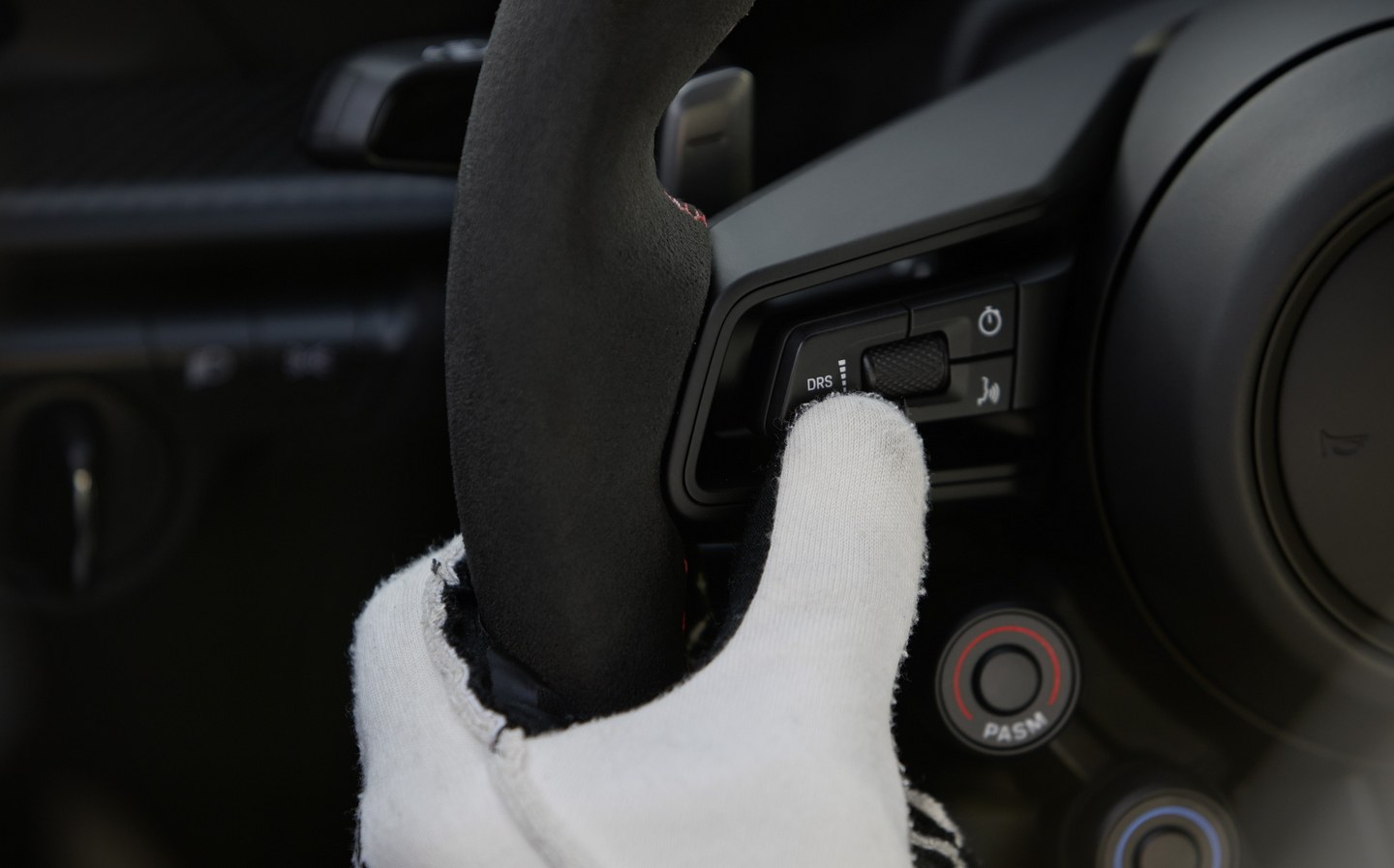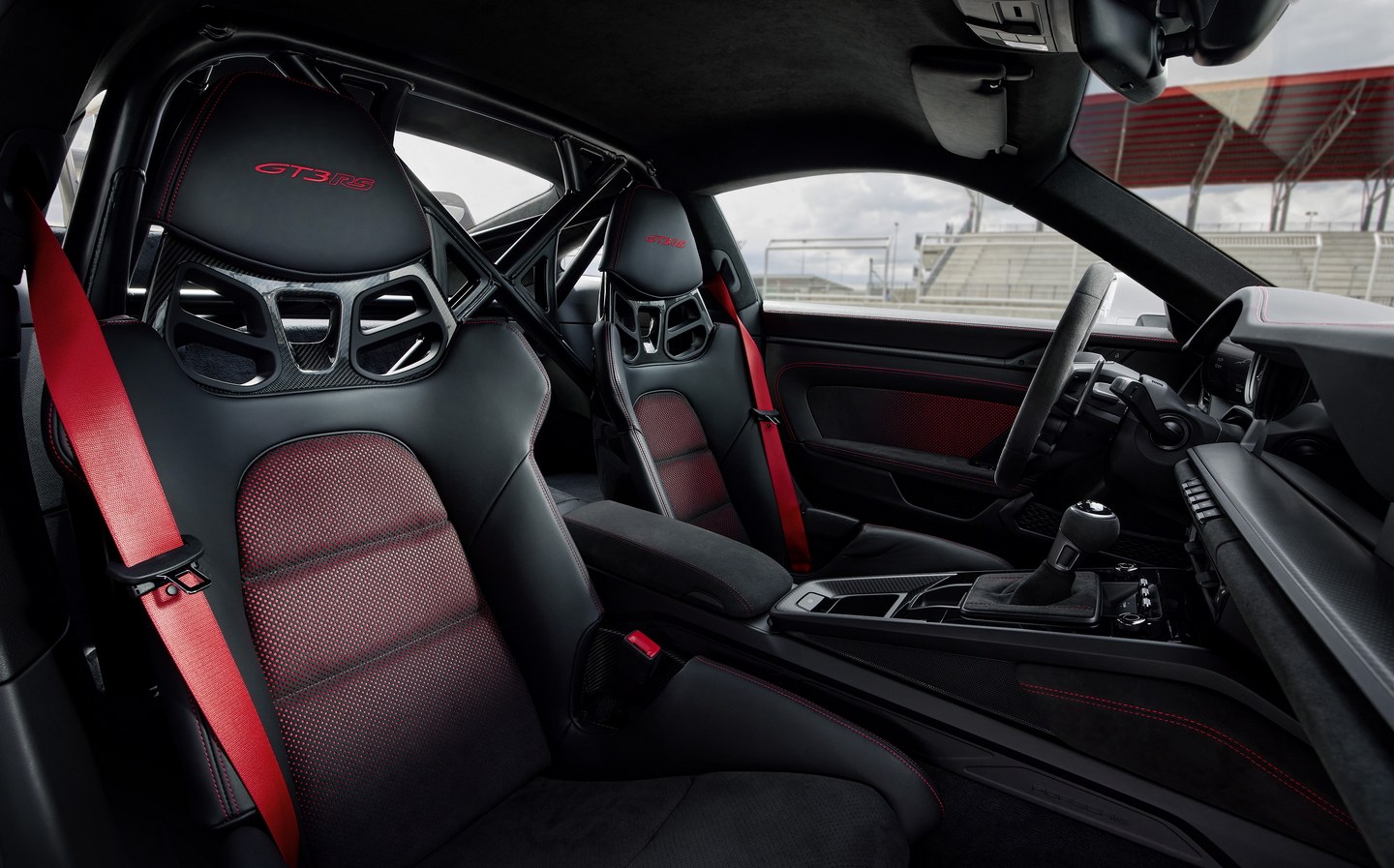Porsche 911 GT3 RS revealed with active aero, more power and enhanced track focus
Cooling tech derived from Le Mans cars
Porsche has unveiled a new 911 GT3 RS, a more hard-edged, track-oriented version of the already-quick 911 GT3.
At first glance, the key differences between the RS and the standard GT3 are a small power boost and the work involved in making the RS that bit more track-focused thanks to aerodynamic and cooling upgrades.
Gone, for instance, is the front spoiler, replaced by a splitter that divides the air flowing over and underneath, with side blades directing air outwards to better optimise the airflow.
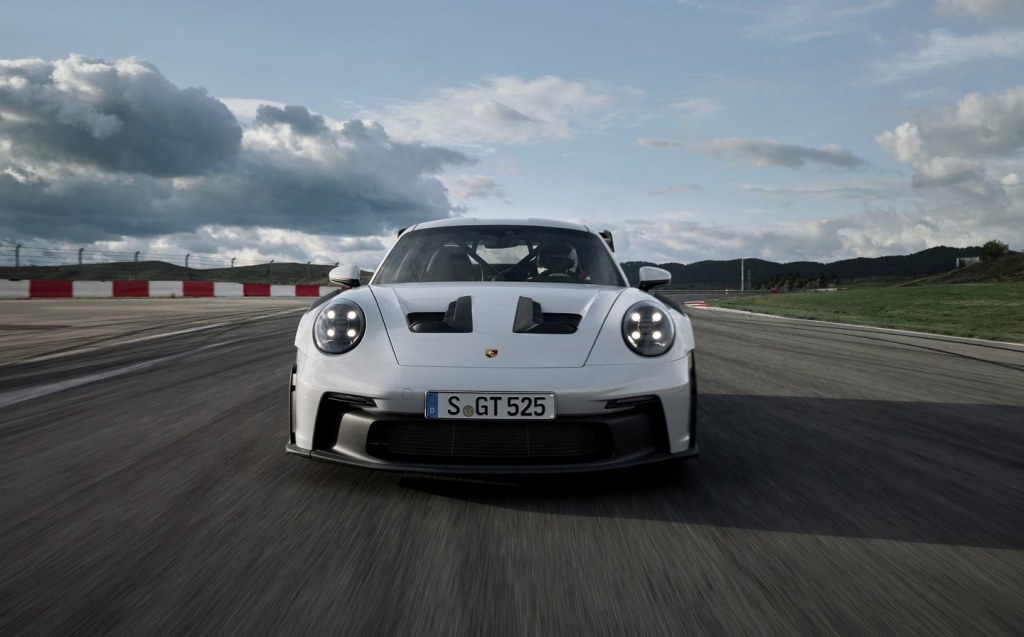
The aerodynamic upgrades up front are made possible by a new centrally-mounted radiator located inside what would, in less hardcore 911s, be the front luggage compartment.
Inspired by the cooling systems on Porsche’s class-winning Le Mans cars, the new set-up does away with the usual 911 three-radiator array, allowing the RS to free up more space for active aero features; air from the radiator is released through large nostril vents on the bonnet.
Up front, the active aero primarily consists of continuously-adjustable wing elements in the nose that, when working in conjunction with the rear wing (more on that later), can generate up to 860kg of downforce at 177mph.

Ventilation of the front wheel arches is achieved via louvred openings in the wings to release heat generated under heavy braking, with outlets behind the wheels also reducing air pressure and making the air flow more cleanly.
Fins on the roof direct the hot air from the bonnet vents outwards, ensuring cooler engine intake temperatures in the rear, while the openings in the rear side panel are used purely to improve aerodynamics and not to suck air into the engine.
Like the front wheel arches, the rear ones feature an intake and a side blade for better airflow, while the rear diffuser is an enhanced version of the one used on the 911 GT3.
A huge two-part rear wing, the upper edge of which extends higher than the roofline, uses a swan-neck mounting design for enhanced efficiency, and consists of a fixed main wing and an upper, hydraulically adjustable section.
New to a road-legal Porsche is a drag reduction system, which, when high straight-line speeds are required, flattens the active aero up front and on the rear wing; when maximum stopping power is needed, the system cuts in and tilts the wing elements to their maximum angle to generate the most drag and stop the car faster.

The whole body is relatively light, with the doors, front wings, roof and bonnet all made from carbon-fibre reinforced plastic (CFRP), contributing to the RS’s weight (including fluids and an almost full tank of petrol) of 1,450kg, all of which should be to the benefit of driving dynamics.
The aerodynamics aren’t confined to the body surfaces, as even the front wishbone arms have a teardrop profile that is claimed to increase downforce by as much as 40kg at top speed. Other barely-noticeable under-the-skin modifications to the RS versus the GT3 include a wheel track 29mm wider than before and modified spring rates front and rear.
At the heart of the RS is, as expected, Porsche’s naturally-aspirated six-cylinder boxer engine, which at 518bhp, has increased in power by only 15bhp compared to the 503bhp of the GT3.
That boost comes chiefly from the use of a new camshaft design with modified cam profiles, which, with an adapted version of Porsche’s seven-speed double-clutch automatic gearbox using a higher final drive ratio to further improve acceleration, allows the RS to sprint from 0-62mph in 3.2 seconds, going on to a top speed of 184mph.
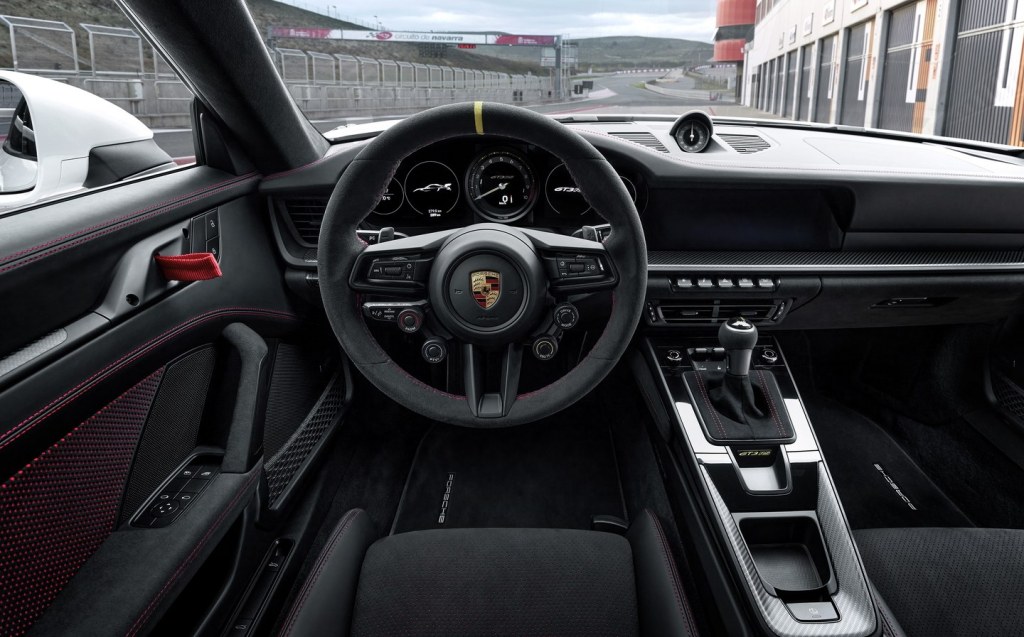
Best use is made of the boost in power by tweaking the driving modes between Normal, Sport and Track.
Nearly everything is endlessly adjustable in Track mode including the differential settings, as well as the rebound and compression damping at the front and rear axles, all completed using rotary controls on the steering wheel.
The interior isn’t exactly plush, reflecting the RS’s purpose, with two 7in displays and the use of black leather, Race-Tex material and carbon-weave finishes for what Porsche describes as “race-derived ambience”.
For those planning on taking their RS to the track more frequently, the Clubsport package includes a steel rollover bar, a handheld fire extinguisher and a six-point safety belt for the driver is available at no extra cost.
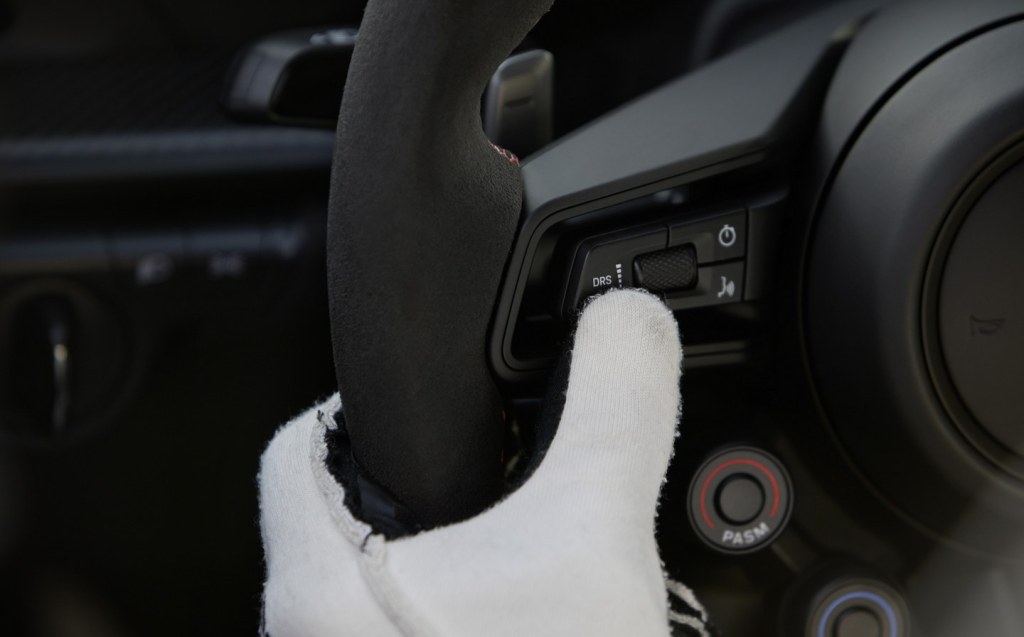
At considerable extra cost, however, is the Weissach package (as seen on the Cayman GT4 RS Clubsport), which adds a carbon-fibre weave to the bonnet, rear wing, roof and side mirrors.
The front and rear anti-roll bars and rear coupling rods are also made from CFRP, as is the rollover bar, which saves 6kg.
Another option with the Weissach package is magnesium forged wheels that save another 8kg. At up to £25,739, that weight saving doesn’t come cheap.
The 911 GT3 RS has just gone on sale, with prices starting from £178,500. As a high-end Porsche, it’s probably a very sound investment if you can afford one (and get on the list).
Related articles
- After reading about the new Porsche 911 GT3 RS, you might be interested in read why Jeremy Clarkson said everyone loves the Porsche 718 Cayman GT4 RS
- And don’t miss our track review of the pure-electric Porsche Taycan GTS.
- Or, check out the best luxury cars to buy in 2022
Latest articles
- Lotus shows off its work on British Cycling’s Paris Olympics bicycle
- New Aston Martin Vanquish to get V12 engine with 824bhp
- Cupra updates Leon and Formentor with sharp styling and longer-range hybrids
- Extended test: 2023 Vauxhall Astra Sports Tourer GS PHEV
- Omoda 5 prototype review: Bargain family SUV is solid first effort for new Chinese brand
- Dacia Duster 2024 review: Rugged, affordable SUV modernised with electrification and quite the glow up
- Audi A3 Sportback 2024 review: Softly, softly, catchy premium hatchback buyer
- New electric-only Mini Aceman fills gap between Mini Cooper hatch and Countryman SUV
- Tesla driver arrested on homicide charges after killing motorcyclist while using Autopilot



